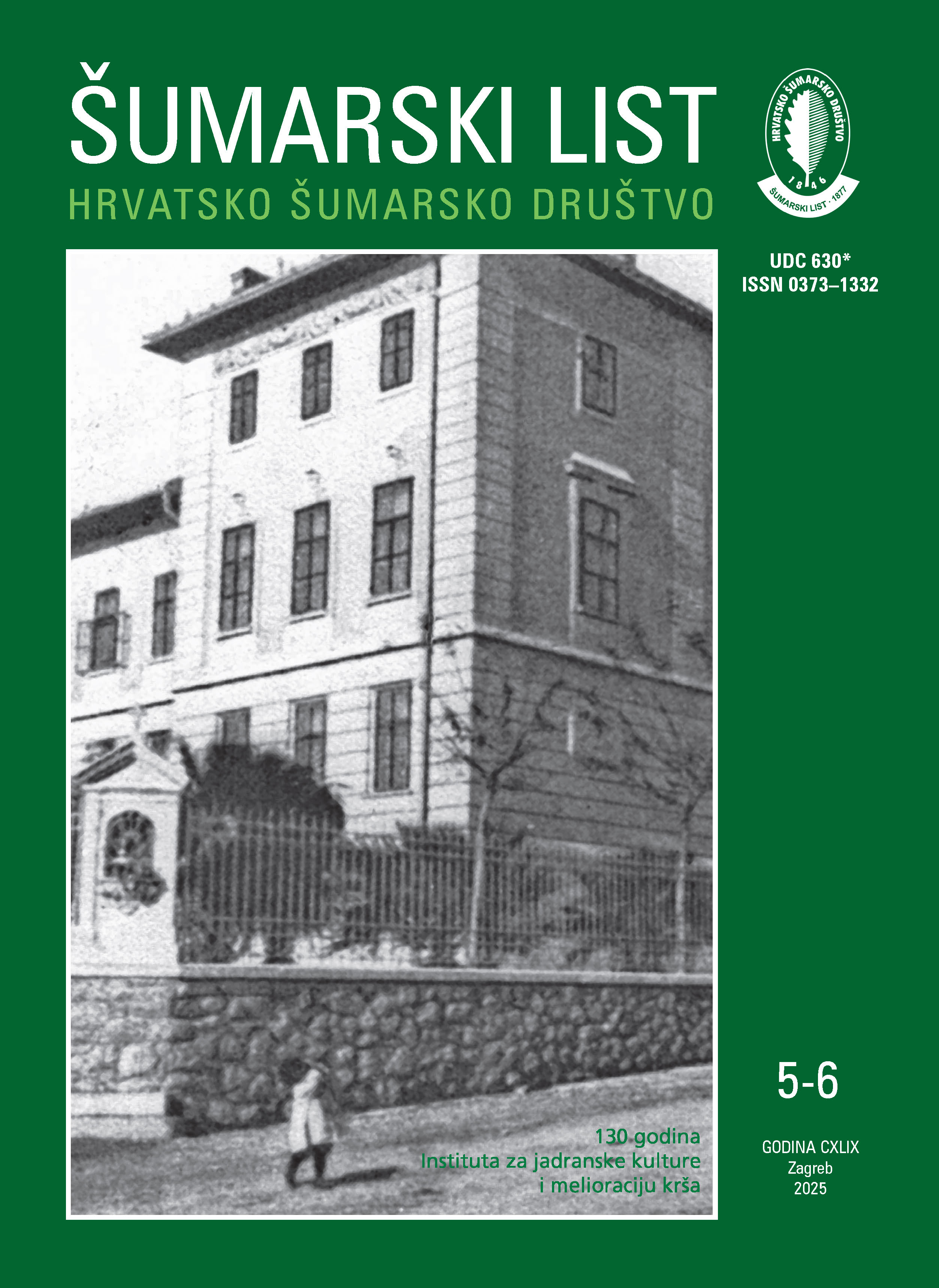Određivanje antioksidacijskog profila uzoraka esencijalnog ulja i ekstrakata dobivenih iz lavande (Lavandula angustifolia Miller)
Ključne riječi:
Lavanda, antioksidacijska aktivnost, DPPH, ABTS, FRAPSažetak
Obična lavanda (Lavandula angustifolia Miller) je niska, višegodišnja grmasta biljka koja raste u zemljama oko zapadnog Mediterana. Potekla je iz sunčanih stjenovitih područja i prvenstveno se uzgaja zbog svojih esencijalnih ulja. Različite studije pokazale su da određene vrste ljekovitih biljaka, kao što je L. angustifolia Miller, koje sadrže linalol i linalil acetat ester, imaju blagi sedativni učinak i koriste se u aromaterapiji i fitoterapiji za ublažavanje stresa. Svrha ove studije je utvrditi antioksidacijsku aktivnost uzoraka obične lavande. Uzorci biljnog materijala prikupljeni su sa sljedećih područja: Gubavica (općina Mostar) i Šehovina (grad Mostar). Pri tome su analizirana četiri uzorka: esencijalno ulje dobiveno hidrodestilacijom biljnog materijala (Gubavica), uzorak maceriran u etil acetatu (Šehovina), prikupljeni vodeni ostatak nakon hidrodestilacije (Gubavica) te komercijalno esencijalno ulje. Određivanje antioksidacijske aktivnosti uzoraka provedeno je s pomoću sljedećih metoda: DPPH, ABTS i FRAP. Hidrodestilirano esencijalno ulje, kao i komercijalno ulje, pokazali su slabiju antioksidacijsku aktivnost, što je potvrđeno svim korištenim metodama. Slabija antioksidacijska aktivnost također je zabilježena u analizi uzorka etil acetata. Praćenjem tijeka reakcije za navedene uzorke nije bilo moguće izračunati IC50 vrijednost. Vodeni ostatak nakon hidrodestilacije pokazao je najvišu antioksidacijsku aktivnost prema svim korištenim metodama, što je potvrđeno IC50 vrijednošću prema DPPH metodi, koja je bila 0,032 ± 0,006 mg/mL, dok je za ABTS metodu IC50 vrijednost bila 0,135 ± 0,003 mg/mL. Također, prema FRAP metodi, vodeni ostatak nakon hidrodestilacije pokazao je najbolju antioksidacijsku aktivnost (1099,45 ± 25,39 mg Evit. C/g ekstrakta). Usporedbom kemijskog sastava i antioksidacijske aktivnosti ispitivanih uzoraka može se zaključiti da su za antioksidacijsko djelovanje odgovorni fenolni spojevi koji su bili sadržani u vodenom ostatku nakon hidrodestilacije esencijalnog ulja, koji je i pokazao najbolju aktivnost, a da spojevi koji čine esencijalno ulje imaju neznatnu učinkovitost kad je u pitanju određivanje antioksidacijskog kapaciteta.
Preuzimanja
Objavljeno
Licenca
Autorska prava (c) 2025 Esmera Kajtaz, Dženita Alibegić , Haris Nikšić , Kemal Durić, Željko Španjol , Boris Dorbić

This work is licensed under a KreativniCommons Attribution-NonCommercial Međunarodne licence.


